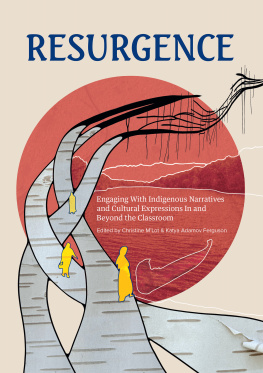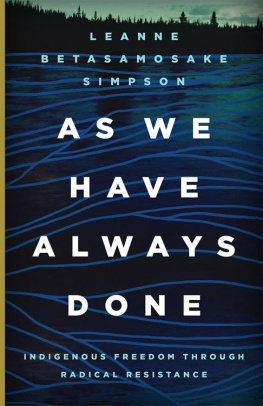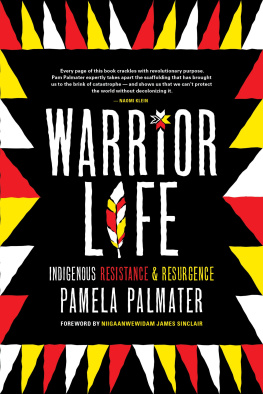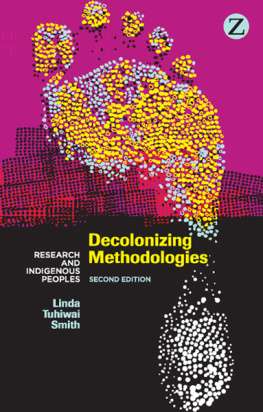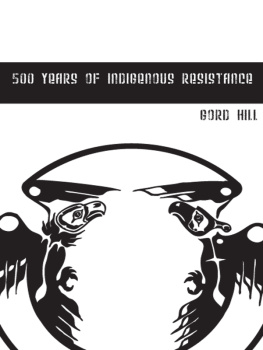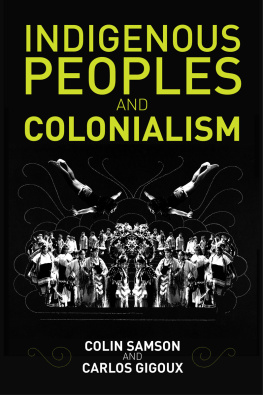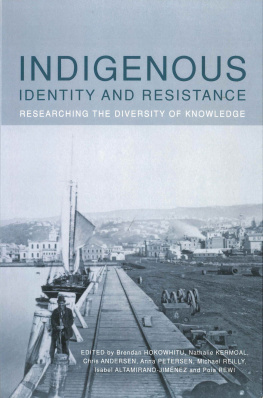Preface
Elaine Coburn
And there are some who even after a hundred years continue to struggle for equality and justice for their people.
Campbell 1973: 13
This book is about Indigenous resistance and resurgence across lands and waters claimed by Canada. By resistance, I follow Alfred (n.d.) in meaning struggles against an ongoing world colonialcapitalist political economy, including contemporary colonialism within the Canadian state. Resistance is necessary to Indigenous survival against centuries of genocidal policies, and the ongoing dispossession and destruction of Indigenous lands and water by the state, capital and many non-Indigenous persons. Resurgence, however, is Indigenous self-determination: renewing and re-creating diverse, specifically Indigenous ways of being, knowing and doing (Alfred 2009: 36).
Of course, some might contest this distinction between resistance and resurgence. As Emma LaRocque (2010: 11) has argued, given the magnitude of the dehumanization of Indigenous peoples, resistance has always meant both deconstruction and reconstruction. Deconstructing the idea of Indigenous peoples as savages, for example, is premised on the reconstruction of Indigenous peoples as fully human. In this sense, there is no tension between resistance and resurgence. Instead, both are part of the same overarching project: the full expression of self-determining Indigenous peoples and of each Indigenous individual, who is at once part of Anishinaabe, Mtis, Dene, etc. peoplehoods and a unique member of universal humanity (LaRocque 2010: 1011).
In describing and analyzing but also celebrating Indigenous resistance and resurgence, this book suggests rough pathways to freedom, as Alfred (2009: 40) might put it, for diverse Indigenous peoples across lands and seas claimed by Canada. In her Foreword, Emma LaRocque reminds us of the multiple challenges but also accomplishments of Indigenous scholars. She writes of the political and ethical imperative of Indigenous research that at once resists legacies of centuries-old colonialism and critically innovates from diverse and changing Indigenous perspectives in the academy. My Introduction then draws upon a wide range of Indigenous scholars and actors to critically consider what is meant by the concepts Indigenous, Resistance and Resurgence, as well as the roles of both Indigenous and non-Indigenous academics in Indigenous struggles for justice.
In the first part of the books main section, Telling Stories of Resistance, contributors James (Sakej) Youngblood Henderson, Christine Walsh and Jennifer Aarrestad, and Douglas Durst and Elaine Coburn, respectively, consider resistance to colonial law by Indigenous lawyers; resilience by Indigenous women in conflict with the colonial justice system; and the challenges faced by, and activism of, Indigenous persons with disabilities. The last chapter in this section, by Rima Wilkes, describes Indigenous resistance in comparative perspective, across lands claimed by Canada since the 1980s, while offering an autobiographical critique of research about Indigenous peoples undertaken from mainstream sociological perspectives. In so doing, the authors describe and analyze Indigenous resilience and resistance, not least by those who are too often invisible in Indigenous struggles and scholarly appraisals of them. At the same time, there is reflexive consideration of the roles of both Indigenous and non-Indigenous researchers in seeking to accompany such resistance.
Chapters in the second part, Telling Stories about Resurgence, written by Jennifer Adese, Clifford (Kamayaam/Chachimmulthnii) Atleo and Hayden King, are concerned with Indigenous resurgence in the realms of the visual arts, economics and international politics. Each suggests how diverse Indigenous actors are striving to reinvent Indigenous perspectives and practices in ways that are self-determining and transcending instead of reacting against colonial relationships, institutions and ideas. Such self-determination is expressed through works of visual art that are both intensely personal and political; by reinventing everyday economics to honour relationships with other Indigenous peoples and the natural world; and by reimagining international diplomacy in terms that centre Indigenous concepts, including the use of the drum to encourage empathy and compassion, and so bring about peace in a world of conflict.
Finally, in the third part, Telling Stories of Idle No More, contributors Kelly Aguirre, Jeff Denis and Jarrett Martineau offer diverse understandings of the Idle No More movement, which began in December 2012 and swept across Indigenous nations in lands claimed by Canada. They consider the multiple dimensions of this struggle as a particular important instance of Indigenous resistance and resurgence, as well as the movements transformations up to the present. In so doing, they not only offer insights into Idle No More but also shed light on many Indigenous struggles for justice. As Aguirre suggests, Indigenous resurgence includes joyful storytelling that is once continuous with ancestral knowledge and innovating from this knowledge. Denis explains how a four directions analytical model inspired by the Medicine Wheel informs new understandings of the physical, intellectual, emotional and spiritual elements of Indigenous resurgence. Martineau considers the tensions and ambivalent role played by mediatized activism, while arguing for a place-based Indigenous resurgence that brings into being a new history of the Indigenous present. In the Afterword, Alex Wilson challenges Indigenous actors and allies to consider the possibilities of a transformative, even revolutionary Indigenous feminist politics that enacts love by developing responsible relationships with all living beings and the natural world.
Importantly, if these chapters together consider issues of state and political economy, culture and technology, activism and research, mobilization and repression, knowledge and being, they are never abstract matters. Instead, they are deeply personal, political and practical questions. Precisely because the political is personal, as well as the reverse (Bannerji 2000: 88), all the chapters emphasize Indigenous voices and perspectives on their own experiences, whether written by Indigenous or non-Indigenous scholars. This makes real the facts of colonialization in daily life, but also emphasizes Indigenous resistance and resurgence as practices rather than as abstract theory.
Finally, one underlying argument across this book is that colonial-capitalism is an historical fact, but not an inevitability. A possible world in which there is justice for Indigenous peoples is prefigured in todays acts of self-determination, small and large, well-known and anonymous. This is true even if these practices of self-determination are incomplete, sometimes contradictory and subject to sustained repression. We turn here to the words of Little Pine Cree Nation poet Beth Cuthand (2001: 136), who envisions resurgence in her own terms. Her words, like this book, do not speak prophecies but only possibilities:
But
More will claim their warrior blood
More will pray their road to peace
More will dance under the thunderers nest
More will sing their way to freedom.
References
Alfred, Taiaiake. n.d. Colonialism and State Dependency: Prepared for the National Aboriginal Health Organization Project..
___. 2009. Wasse: Indigenous Pathways of Action and Freedom. Toronto: University of Toronto Press.
Bannerji, Himani. 2000. Dark Side of the Nation: Essays on Multiculturalism, Nationalism and Gender. Toronto: Canada Scholars Press.
Campbell, Maria.1973. Halfbreed. Toronto: McLelland and Stuart.
Cuthand, Beth. 2001. This Red Moon. In Jeannette C. Armstrong and Lally Grauer (eds.),



